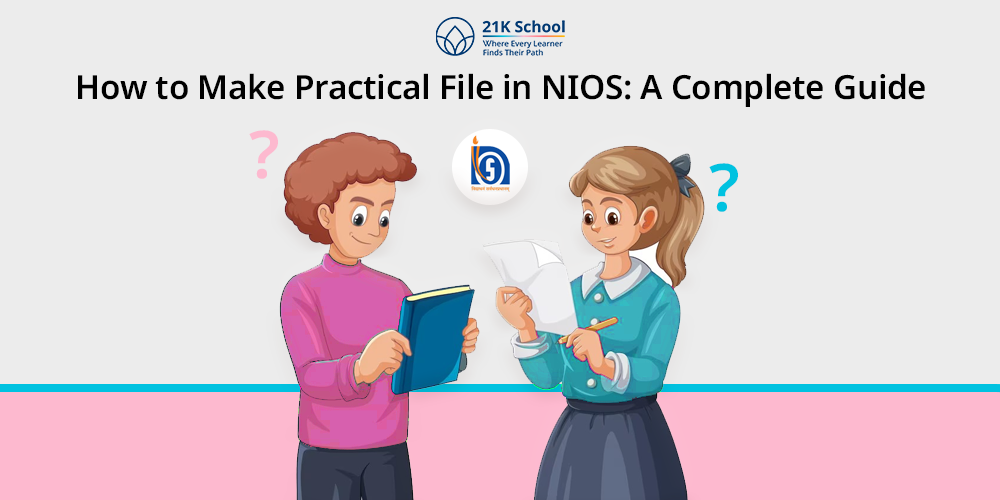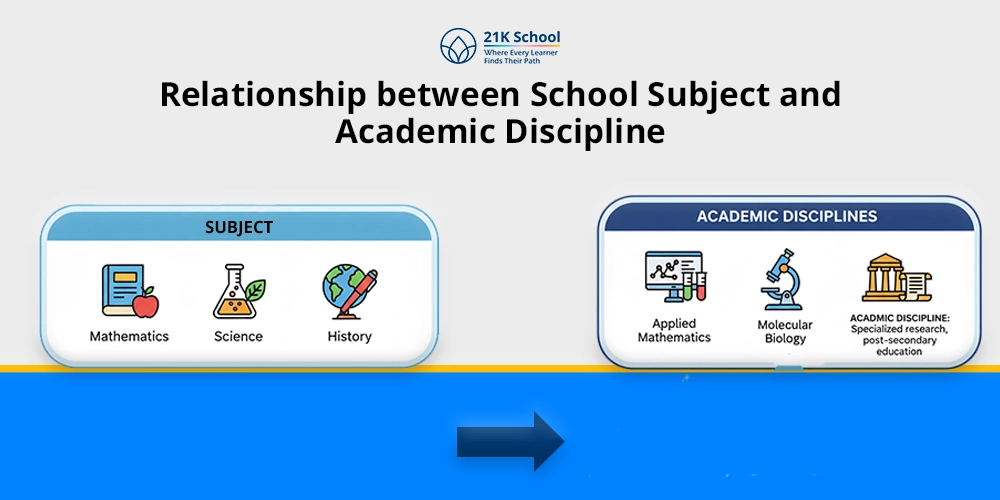
The National Institute of Open Schooling (NIOS) is a flexible system of self paced education. It focuses on the various needs of the students in the country.
NIOS also incorporates practical work as part of its curriculum . This is to make sure the students know not just the theory of subjects but also apply it in a real life situation.
A practical file is one of the most essential elements of this actual assessment . It consists of all the experiments, activities, projects, which a student conducts in their course.
Within this guide, we will move through creating an effective, well structured Practical File for NIOS.
Further to give out some success pointers, and tell why this is an important element of the academic process.
Contents
What is a Practical File in NIOS?
A Practical File in NIOS is a record which holds the practical work done in a subject. These subjects can be science, geography or computer applications.
It is a structured list of all the experiments, assignments, fieldwork, observation and all activities that students undertake as a part of their course.
The Practical File is an evidence of your practical study and must be presented to your exam or study center when you want to take practical tests.
Normally, learning practice presupposes writing a report of each experiment detailing it and all the data, calculations and results.
A tidy useful file will not only facilitate getting good marks , but it will also help you to learn better. As you will be encouraged to experiment and explore ideas outside the textbook.
How to Make a Practical File for NIOS: Step-by-Step Process
To develop an excellent working document on NIOS necessitates good planning, detailing and a well laid method.
The following is a six-step process in enabling you to effectively organize and handle your practical file.
1. Understand the Syllabus and Practical Requirements
It is necessary beforehand to be acquainted with the syllabus of the subject before proceeding to take it. Each topic has a certain amount of practical work and experiments to add into your practical file.
NIOS syllabus describes the experiments and tasks you should carry out in the course. The practical requirement will assist you in prioritizing the experiments that matter and not missing out on major tasks.
After understanding what is required, list down all the experiments and activities that you should record within your practical file. This will act as a reference to know that your file is complete.
2. Get the right materials
There are some materials you will require to develop and structure your practical file. These are:
- A spiral or hard cover file (if possible A4 size).
- Putting labels or tags where you put your file.
- Stationary pen, rule, pencil, eraser and other writing and drawing graph tools.
- Hard copies or images (you may need some) to go with your experiments.
- Use reference books and study materials to obtain necessary theoretical information on each experiment.
When you have downloaded all the materials needed available on https://www.niosclass.com/, you can now prepare your practical file.
3. Organize Your Practical File
An organized practical file is also very important as far as positive impression is concerned. Every experiment/activity must be well recorded and order must be similar throughout the entries.
Each experiment or a practical activity is often presented in the following format:
- Name of Experiment: Post the name of the experiment in the head of the page. It has to be short, precise, and it has to give indication of what the experiment is all about.
- Aim/Objective: Explain the rationale of the experiment. Got something to learn or prove with this experiment? Be concise and particular.
- Materials and Apparatus: Write down all the materials, instruments, and apparatus in the experiment. This is essential in replicability and accuracy.
- Theory/Principle: Give a short description of the scientific theory or principle involved in the experiment. It assists with comprehension of the idea and puts your work into perspective.
- Procedure: Write in detail of the procedure you used to carry out the experiment. This part needs to be well defined and understood. Make it by bullet point or number.
- Observations/Data: Write everything you have observed throughout the experiment. This may involve readings, measures or any other observation that was done. Write here also the calculations you made, in case you made any.
- Results and Calculations: Perform any calculations that may be necessary in an attempt to make any analysis of the data gathered during the experiment. In addition, draw a conclusion on the experiment.
- Discussion/Analysis: Here, make the discussion of the results and comment on patterns or observations. Did the results correspond to the expectations? Why may there be discrepancies at all?
- Conclusion: Make conclusions on the results and their analysis. What have you learnt out of the experiment? Did it accomplish the goal?
- Precautions: Write down the precaution you observed in the experiment to minimize inaccuracy and safety.
- Date and Signature: Include the date of experiment and make your tutor or teacher sign the file to sign off that the work is done.
- References: In case you use any books, web sites or other sources related to the theory or procedure, indicate them in the reference list.
You should use this structure in every of the experiments or projects presented in your practical file.
4. Go by the Guidelines and Consultation
In the process of creating your practical file, consult the NIOS guidelines and instructions given in the study material.
The guidelines will be useful at organizing your work properly and making sure that you satisfy the conditions of all the practical’s.
In case you face some problems or need help, do not ignore your subject tutor or colleagues. Feedback and cooperation will assist you to enhance your work.
5. Practical Examination and Marking
At NIOS, practical exams are carried out to test your knowledge on what you have done on the practicals.
The practical file is important in these exams. In the examination, your file will be screened in terms of completeness, accuracy and presentation.
The experiments must be included in the file and it must be organized well in a neat and complete manner.
Be sure to mention all the necessary experiments, make sure that your observations and outcomes are well-documented.
Why is a Practical File Important in NIOS?
Besides in-depth evaluation, here are the following reasons for the importance of practical files in NIOS.
1. Practical Knowledge Evaluation
The practical file is the document that will help in evaluating the way a student has grasped the theory and applied it in practice. The file is the evidence of your practical work where you can demonstrate how you can apply in practice what you learned at school.
The practical file records your knowledge and skill in doing scientific work. Be it a chemistry experiment or a physics demonstration or any other practical work.
2. Internal Assessment
Internal assessments in NIOS are a major component of your grade. This internal assessment is made with the use of your practical file. It is typically graded on a number of factors, such as how accurate your data was or how complete the work was or how well you documented it.
A nice and elaborate practical file can actually help with your internal marks, showing that you care about the subject.
3. Academic Growth
The retention of a workable file will support your studies and will prompt you into thinking critically. Reporting on your experiments, reading the results, and drawing conclusions, you are studying this matter.
This practical method improves how you store information in your head and it also makes you a better scholar.
Common Mistakes to Avoid
As students prepare practical files for NIOS, they are able to make mistakes that they never knew. But after submission there will be no more allowances to correct the assignments.
- Inconsistent Format: Make sure that you are consistent in formats of any experiment.
- Partial Experiments: Never leave any experiment half-way through. Put all the steps you took even when the outcome was not satisfactory.
- Poor Presentation: Neatness plays a major role. Ensure that your writing is readable; your file is structured.
- Failed Signatures or dates: Ensure that you sign and date your file with your tutor or teacher.
- Failure to Reference: Do not forget to say where you got information.
Where and When to Submit your Practical file?
The practical file should be presented at your study center or the exam center prior to your practical tests. This is normally done about a week or two prior to the date on which your practical exam is.
Remember to check the deadline of submitting your practicals with your study center.
How to Get Good Marks in Practical Exam NIOS?
To bring out the best out of it follow some small tips before and during the preparation of practical files in NIOS.
- Complete Details: Make sure that you do not omit any part and that you include all your details when writing about experiments that you did.
- Take the right course: Follow step by step procedure of each experiment. Technical correctness will demonstrate your levels of understanding.
- Take Feedback: You should always seek feedback on your practical file with your teacher to make sure that it has the quality that is expected.
- Practice: Do as much practicals as possible and practice to be good at it.
In Conclusion
Creating a realistic file of NIOS can be, at the outset, a complex procedure. However, with proper precaution, it is possible to draft a systematic and detailed file.
A practical file does not only assist you in the exams, but also improves your knowledge of the topic. It is the chance to demonstrate your practical knowledge and skills.
A high level of planning, persistence, and details can easily help you do well in the practical part of your NIOS courses.


